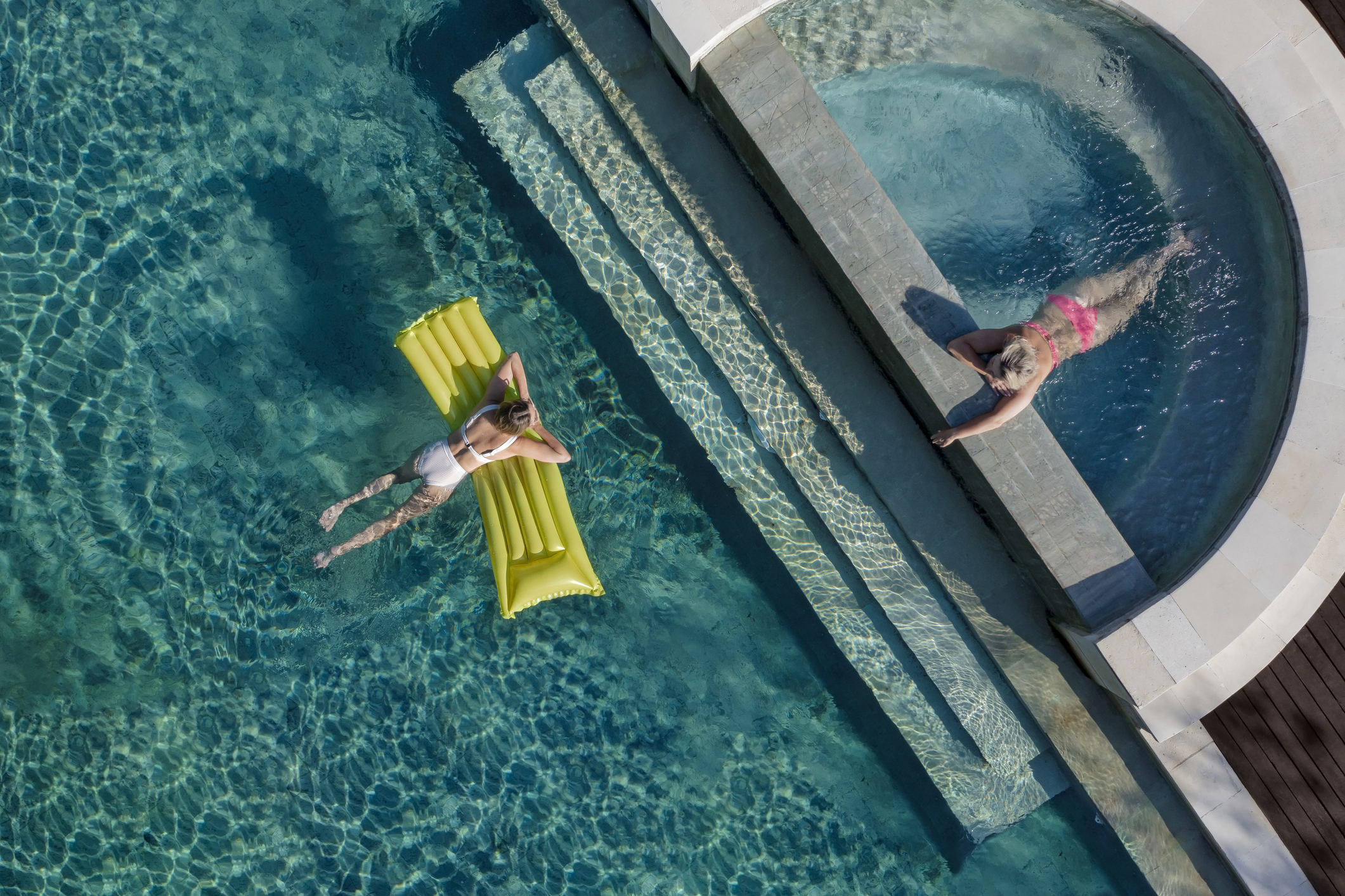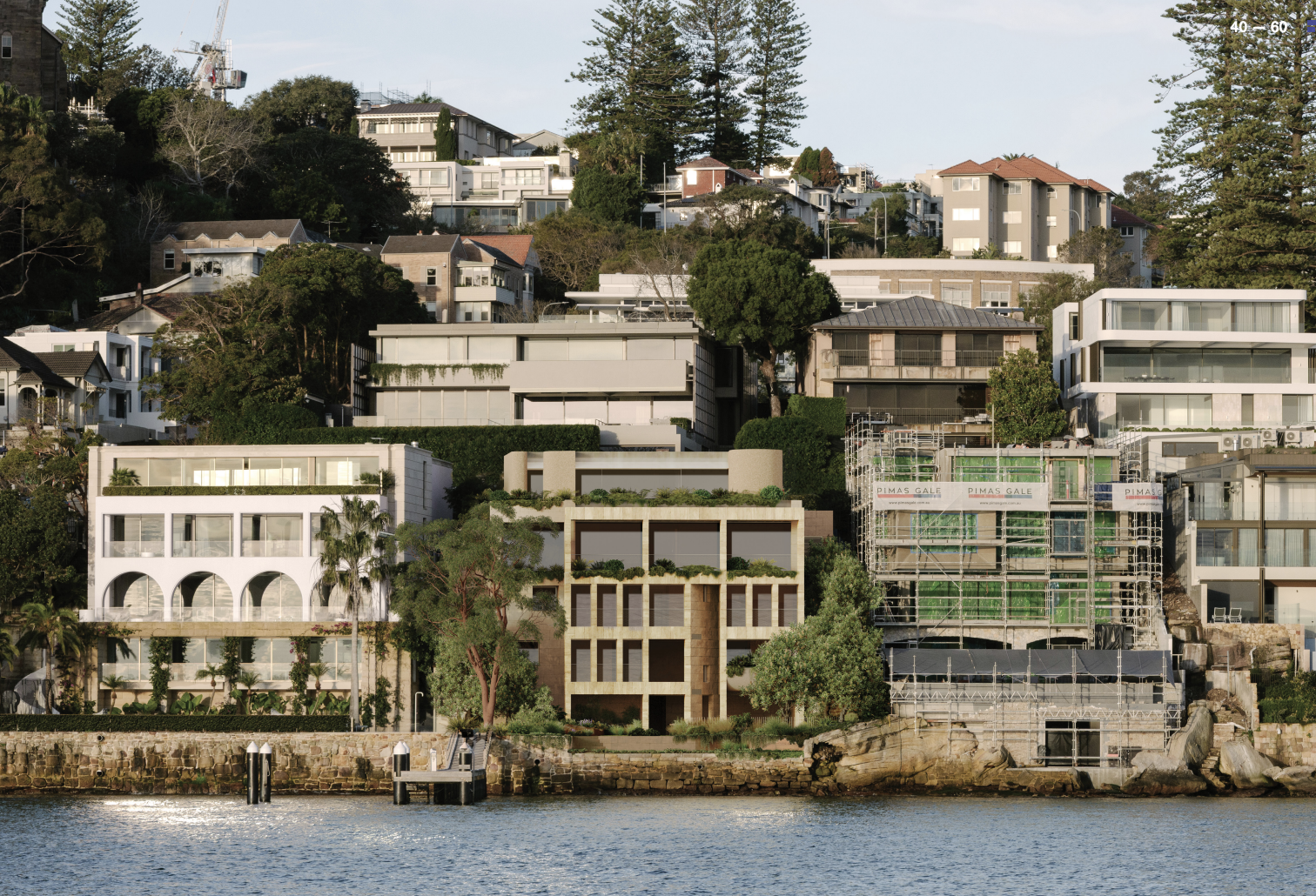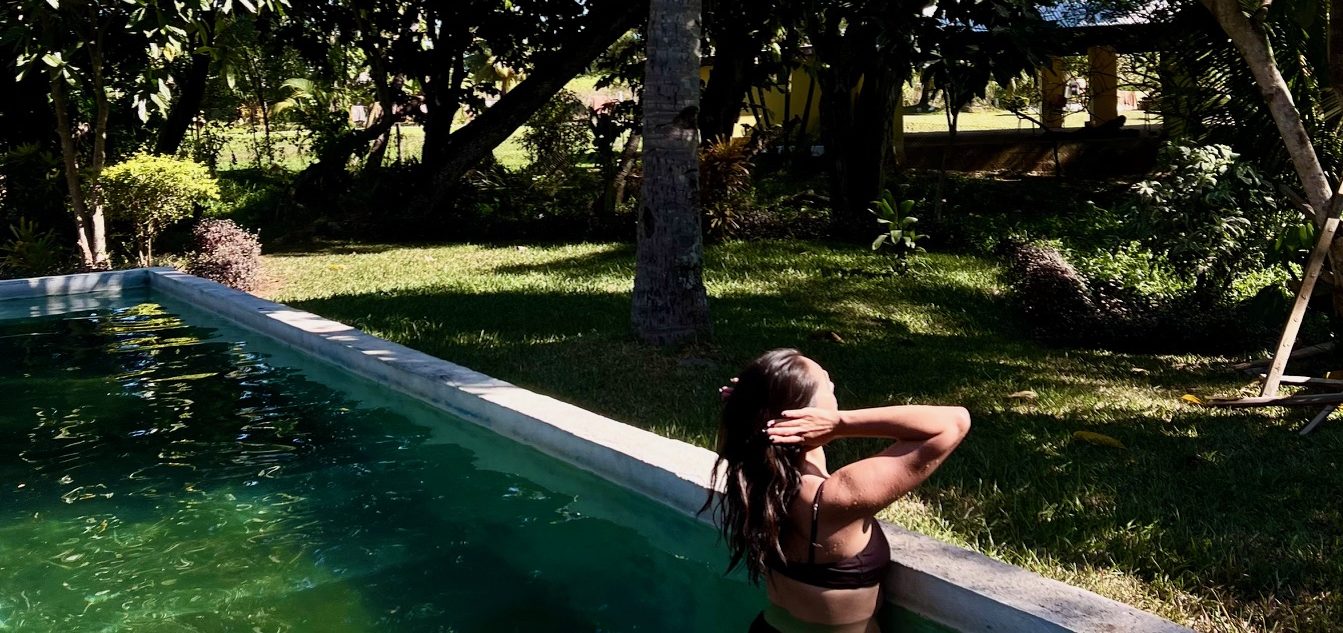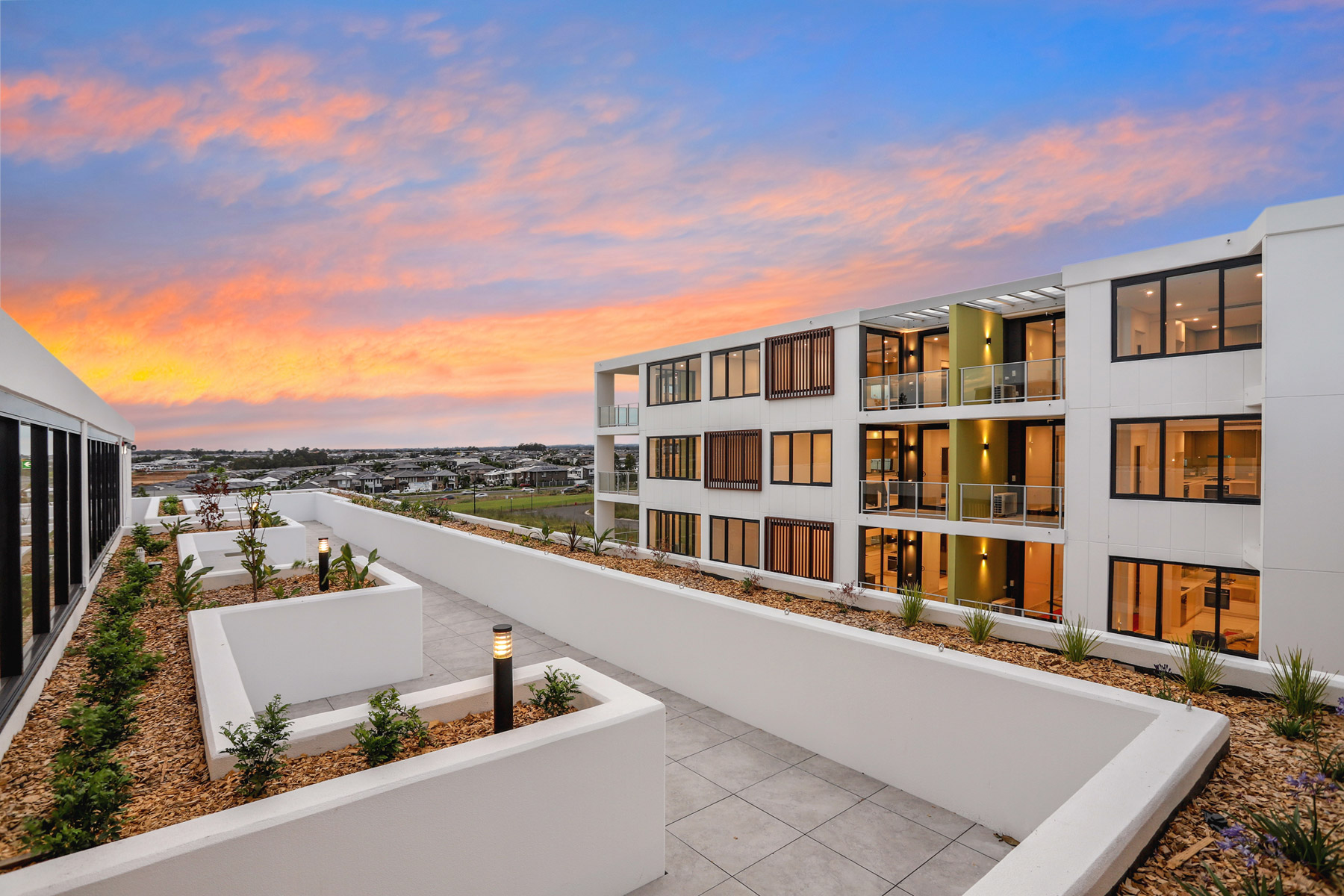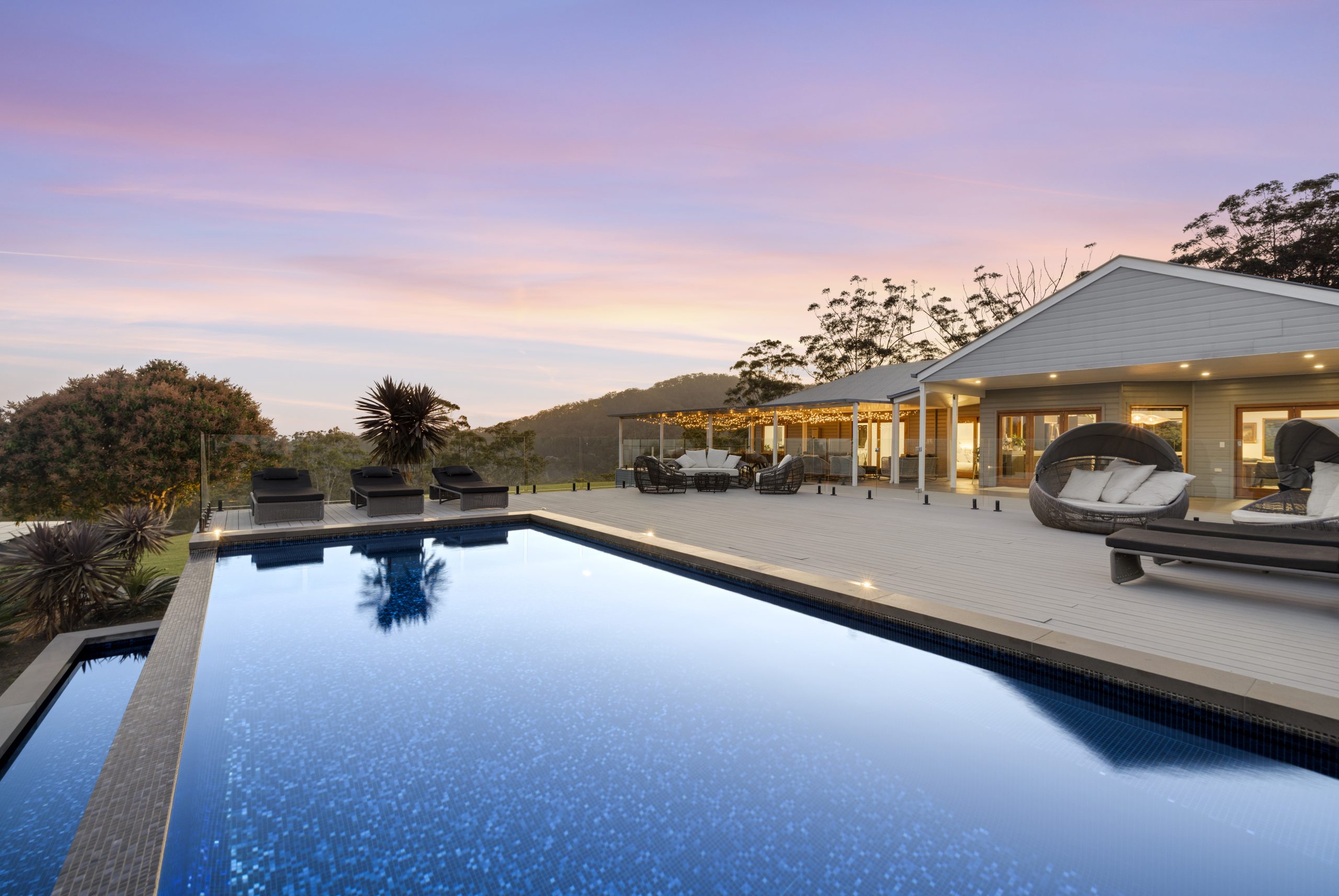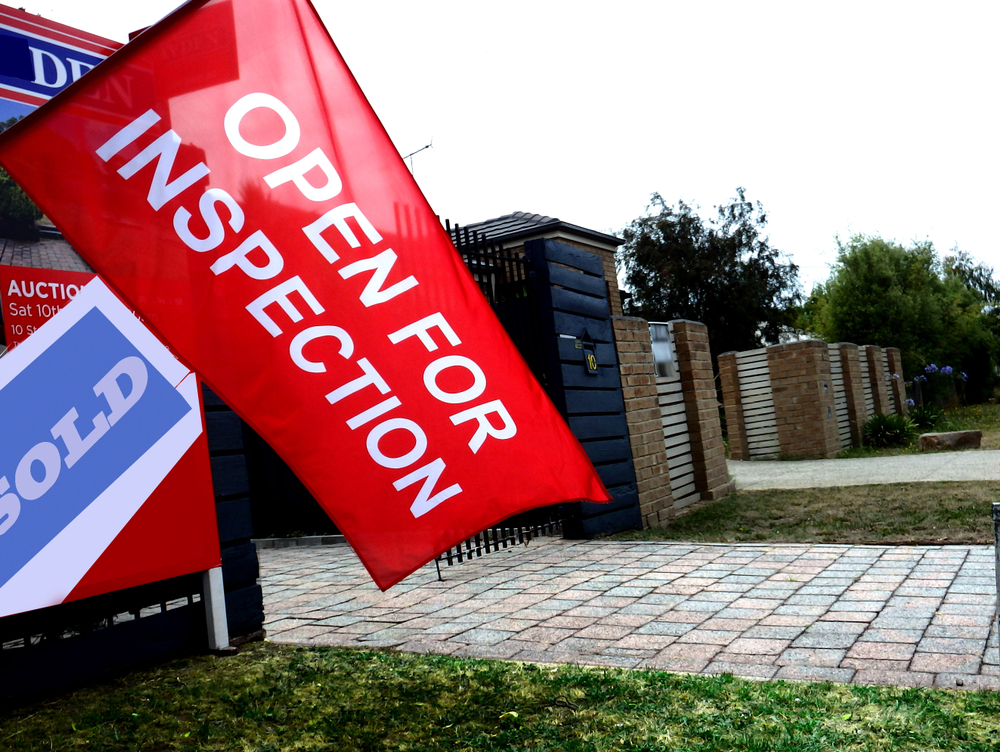10 Swimming Pool Designs To Beat The Heat
There’s nothing more appealing than being able to cool off in your own pool on a hot summer’s day. For many Australians, the idea of a backyard pool is enticing but with so many styles to choose from, the decision is not always straightforward. Considering your budget, the needs of your household, along with the size of your outdoor space is key to achieving the best outcome for delicious days poolside. We take a deep dive into the best in pools to get you into the swim.
CLASSIC RECTANGLE
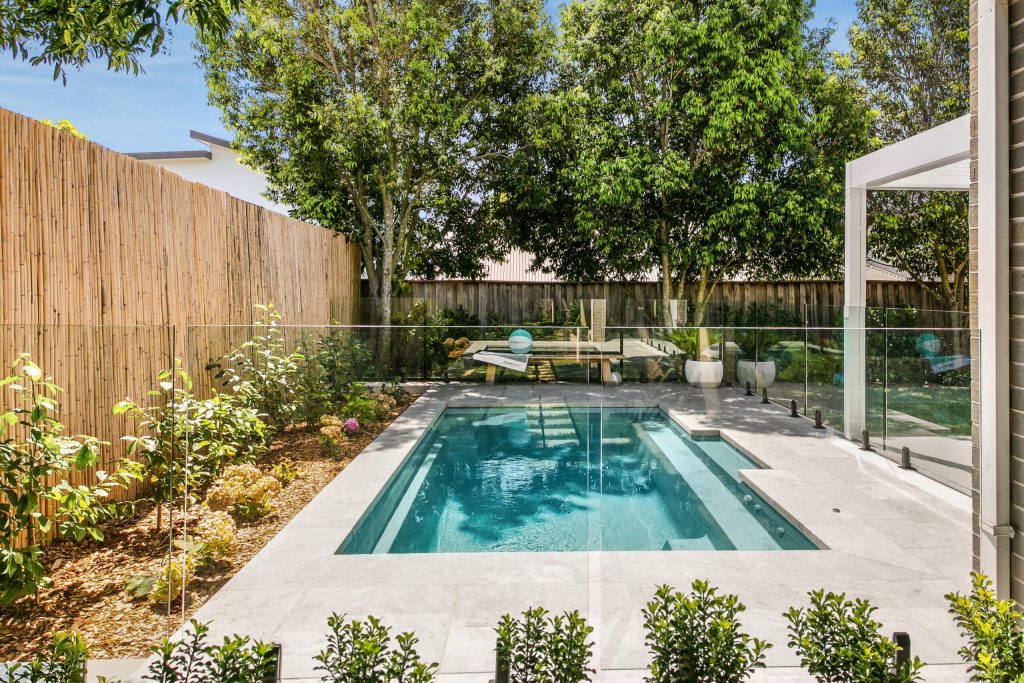
Nothing beats this classic pool design. With the ability to cross styles of architecture from Hamptons to mid century modern and minimalist design, the rectangular pool is a ‘one size fits all’ style that adapts to most needs, from swimming laps to splashing about with the kids. Go as big as you can manage on acreage or shoehorn it onto a suburban block for a clean, classic look that’s hard to top.
INFINITY POOL
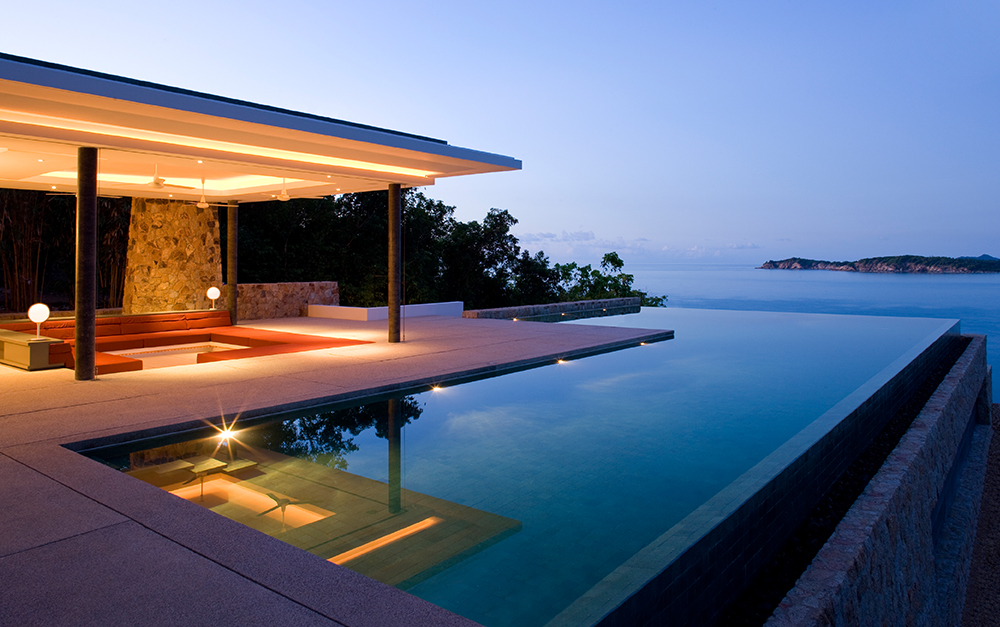
A popular choice where there are views of the water or bushland to enjoy, an infinity pool gives the illusion of having no edge. Also known as rimless, overflow or zero edge pools, the water flows over the edge of the pool into a catchment basin that sits below the waterline, out of sight. A great choice for elevated positions where the pool can create a visual bridge between the house and the view, an infinity pool is particularly expensive to install and run thanks to the continuous need to pump water from the catch basin.
LAGOON OR FREE FORM
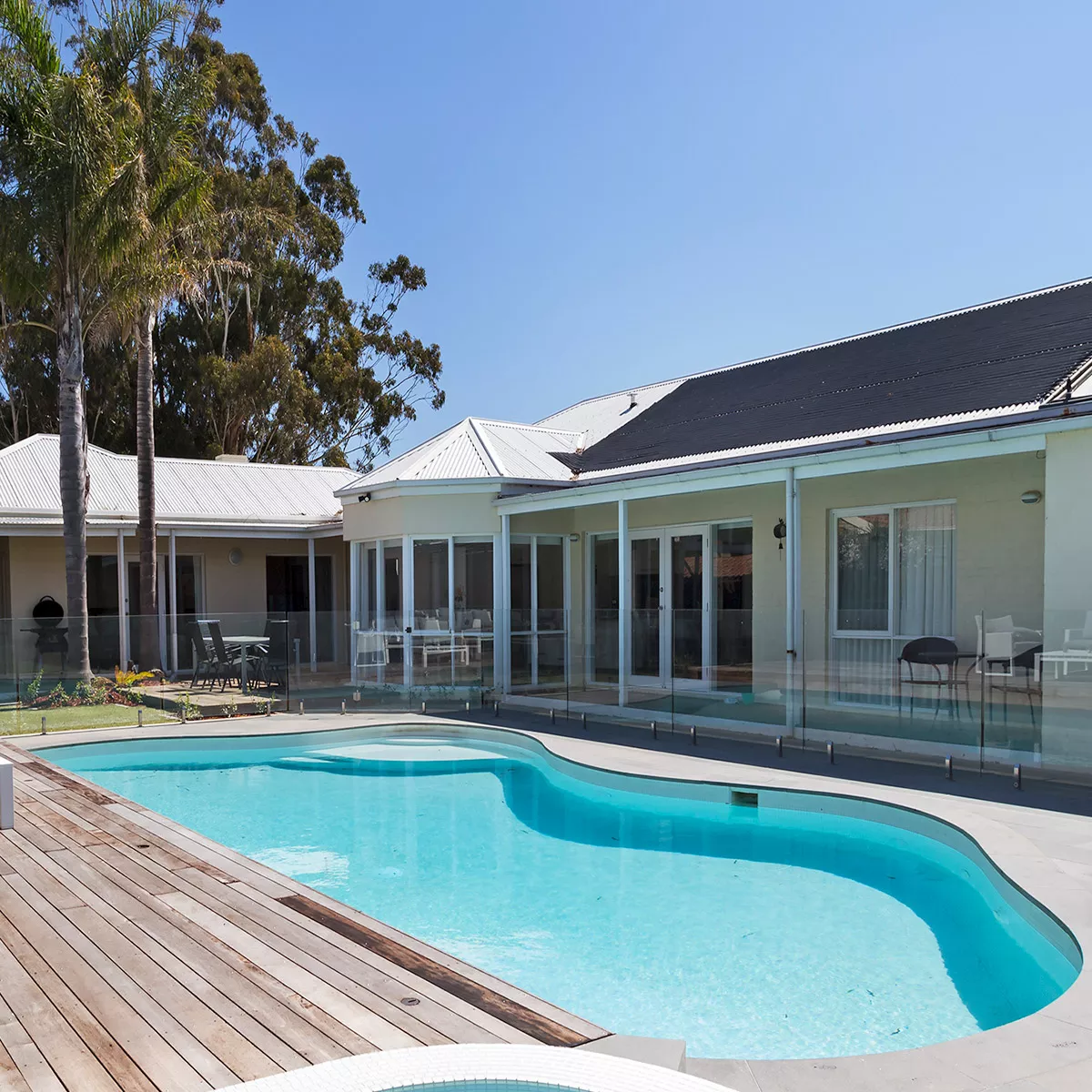
Designed to mimic the natural environment, lagoon or freeform pools have fallen out of favour since their heyday in the 1980s. Despite the name, they are often available in standard sizes in fibreglass or concrete and are characterised by their curved, asymmetrical shapes. Slides and waterfalls are popular accessories to this style of pool while landscaping is typically tropical, in keeping with the oasis-like environment.
LAP POOLS
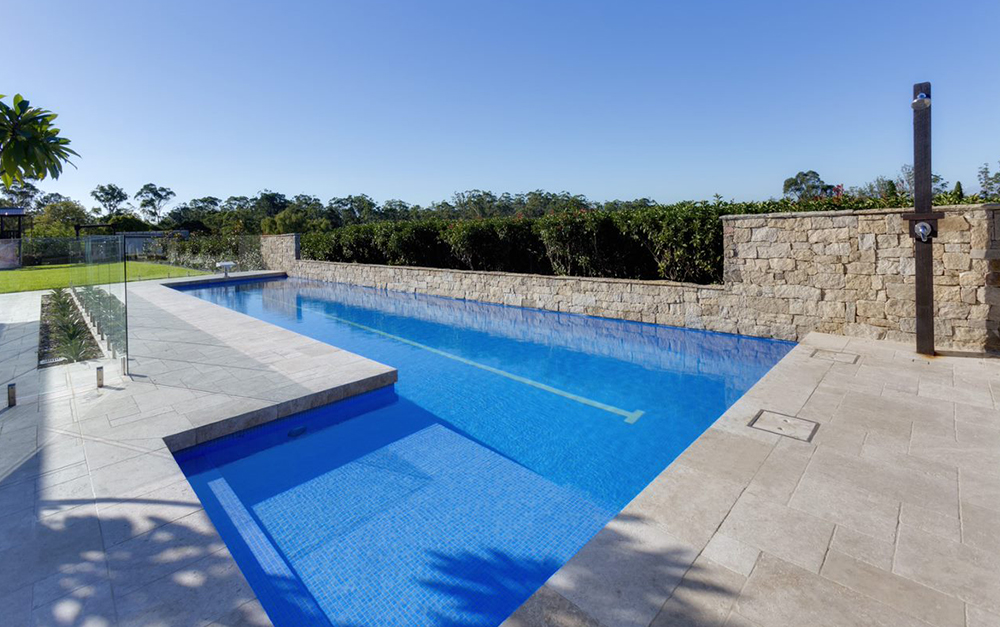
While the name might suggest that this style of pool is aimed at hard core swimmers, lap pools are a great choice where the obvious location for the pool is long and narrow. If doing laps or water therapy is the main purpose for installing the pool, consider installing swim jets which create non-stop resistance to swim against. A lap pool should be at least eight to 10 metres long to be useful.
PLUNGE POOLS

Nothing beats being able to cool off in your own backyard over summer and what plunge pools lack in space, they can make up for in amenity. While swimming is probably out of the question, plunge pools are generally easier and cheaper to maintain than their larger counterparts, making them an attractive option for heating and cooling. They also have the obvious advantage of being able to fit into most backyards.
SPOOLS (SPA POOLS)
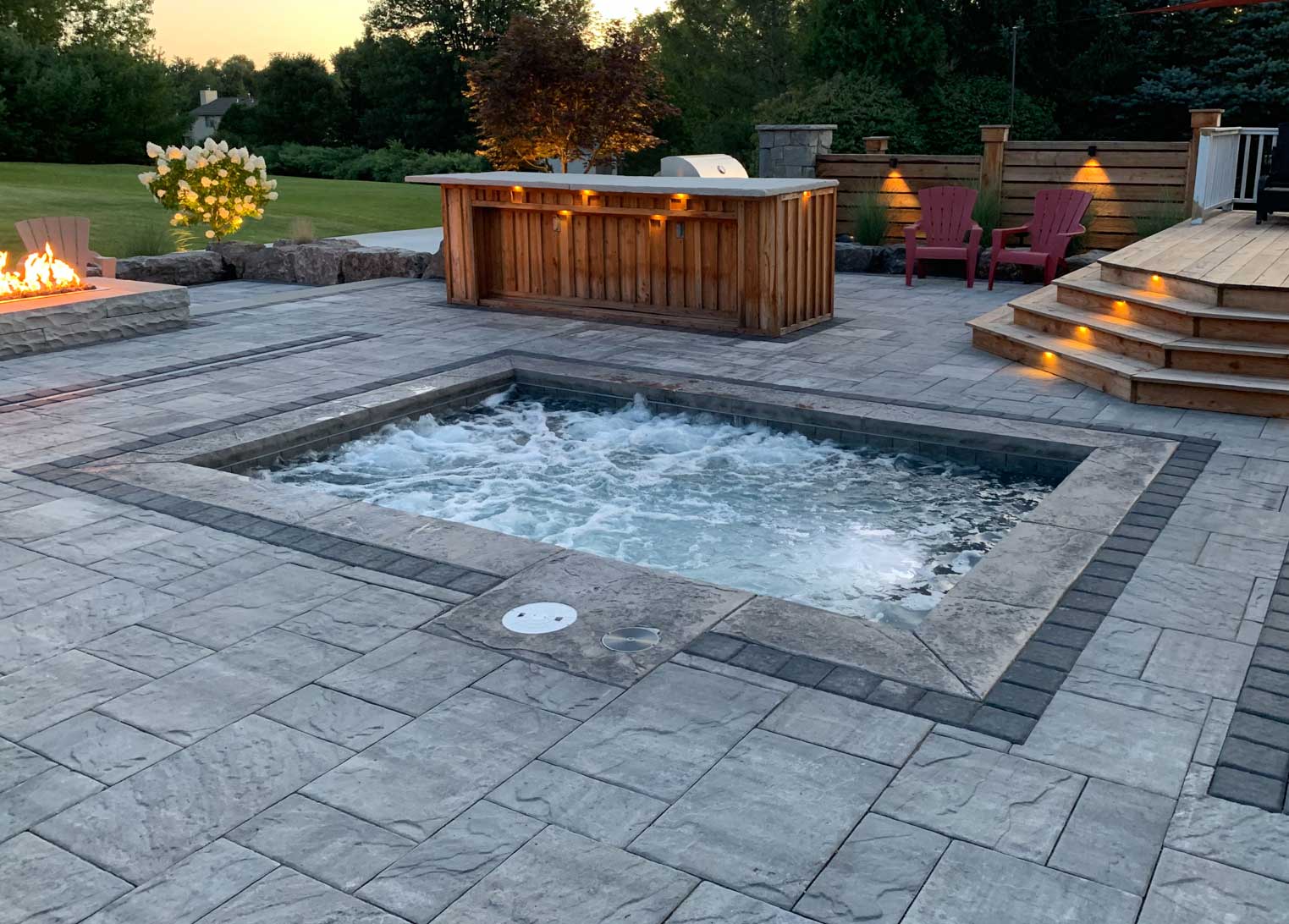
Another great option where space is an issue, spa pools, also known as spools, offer the best of both worlds, with a spa area integrated into all or part of the pool. Known in some places as a cocktail pool, they can be a great solution for those who like to entertain or simply passively enjoy the water. Costs are generally a little less than a conventional pool and more than a dedicated spa.
PERIMETER OVERFLOW POOLS
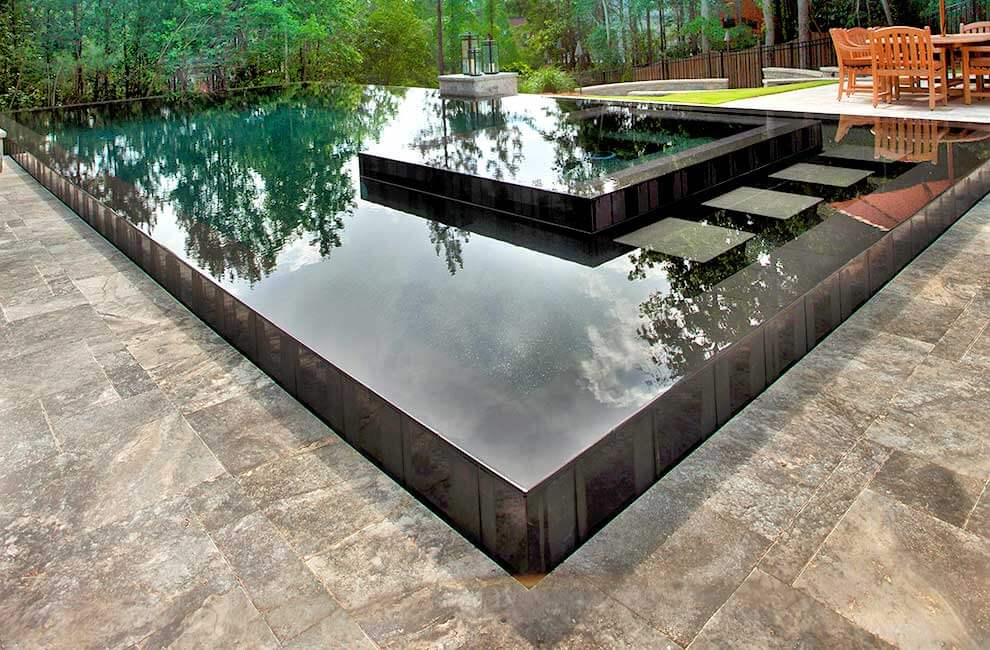
For those who love the integrated look, perimeter overflow pools are a stylish choice. Designed in line with the edge of the deck, the water gives the impression of overflowing at all edges for a sleek, minimalist look. Water is captured and recycled in channels around the perimeter. Available in a variety of shapes and sizes, this style of pool can be pricey to install and run. For level sites though, it’s the ultimate in swimming luxury.
NATURAL POOLS

While conventional pools are kept clean through the use of chemicals such as chlorine, natural pools rely on moving water (via a pump) and biological filters such as plants to maintain good water quality. It’s a style gaining ground in Australia, where water quality is naturally quite high, making the move to natural pools easier, and more homeowners become interested in chemical-free options.
ABOVE GROUND POOLS
:max_bytes(150000):strip_icc():format(webp)/thespruce-abovegroundpoollandscaping-JeerayutRianwed-ab4fb5d8893145b1933217861c38ac41.jpg)
The great advantage of this style of pool is that excavation is often minimal, which means less disruption – and less cost. Strictly speaking, there’s any number of materials available for construction, including fibreglass and concrete, but the above ground pool is probably most often associated with the old-school modular pool with liner from the likes of Clark Rubber.
GLASS WALLED POOLS

If you’re looking to add a little drama to your home, a glass walled pool could fit the bill. Essentially an underwater ‘window’ in recent years, architects have specified glass walled pools to be viewed from inside the house, with the benefit of drawing natural light through the water into internal spaces. An engineer will specify the exact thickness required to take the weight of the water but expect it to be at least 12mm thick.
What is the best type of swimming pool to build?
The type of pool you choose will depend on your budget and the size and style of your yard. Fibreglass pools come in a range of shapes and sizes and are faster and easier to install than concrete, mainly because they are made on the factory floor and delivered to site. Concrete pools take longer to build but they are customisable and can be finished in high end materials. Often, the decision can get down to how long you intend to stay in your property in terms of how much you want to invest.
What is the most expensive part of a pool?
If you’re talking about construction, excavation is often the big cost that takes owners by surprise. Make sure you understand excavation and tipping costs before signing a contract. Filtration, decking, tiling, fencing and landscaping can all add significant cost to the construction and installation of a pool. In terms of running costs, solar energy can be a good way to offset expenses.
What is a good size for a home swimming pool?
Again, this will depend on the size of your outdoor space, your lifestyle and the people who will use your pool. A family of four will have different needs to a couple who prefer to enjoy a dip at the end of a hot day. Choose a size that allows everyone to move around freely while keeping in mind that the larger the pool, the greater the time and money required to maintain it. Pool sizes in Australia have shrunk in recent years but popular sizes for family pools range from 7m by 3m up to 9m by 4m. Speak to your pool builder about the best – and safest – depth for your needs.
From office parties to NYE fireworks, here are the bottles that deserve pride of place in the ice bucket this season.
Pure Amazon has begun journeys deep into Peru’s Pacaya-Samiria National Reserve, combining contemporary design, Indigenous craftsmanship and intimate wildlife encounters in one of the richest ecosystems on Earth.
New research reveals absolute waterfront properties commanding soaring premiums and unmatched buyer demand across the East Coast.
Australia’s most coveted real estate isn’t found in penthouses, trophy suburbs or architectural showpieces. It’s found on the water’s edge.
New analysis shows that absolute waterfront homes continue to outperform the wider prestige market, with buyers prioritising lifestyle, wellness and long-term security, firmly placing beachfront, harbourfront and riverfront properties in a class of their own.
According to new data from McGrath’s The Waterfront Advantage report, waterfront homes across Australia now command an average 86 per cent premium over comparable inland properties.
Sydney leads the increase at 122 per cent, followed by the Gold Coast at 82 per cent, Brisbane at 59 per cent and Melbourne at 43 per cent. All major cities have seen premiums rise over the past two years, underscoring the enduring power of a blue-chip waterfront position.
A Market Defined by Scarcity and Lifestyle Shifts
Several drivers sit behind this sustained strength.
The scarcity of absolute waterfront land, combined with limited turnover, has long kept supply tight. But in recent years, buyer appetite has surged as Australians place greater value on wellness, nature, and the quality of time spent at home.
The research notes that even in uncertain economic periods, prestige waterfront properties remain “reliable investments” thanks to their strong marketability and ease of repositioning within a portfolio. These homes are sought-after for both lifestyle and legacy value.
Absolute Waterfront Outperforms All Other Positions
Not all waterfront locations carry equal weight. In the year ending Q3 2025, super-prestige sales on the absolute waterfront rose 6 per cent, while waterfront reserve properties fell 30 per cent, and opposite-waterfront homes dropped 34 per cent. Premium buyers want direct frontage, and they are increasingly decisive when the right property comes onto the market.
Queensland continues to dominate East Coast waterfront activity, accounting for 58 per cent of all waterfront super-prestige sales, ahead of NSW at 38 per cent.
Victoria has remained consistent at around 9 per cent. Over the past five years, Barangaroo topped the charts for absolute waterfront apartment sales (73 sales), while Mosman led house transactions (38 sales). Regional standouts included Broadbeach Waters and Noosaville.
Maritime Facilities: The Luxury Buyers Now Expect
For prestige homeowners, proximity to water is only part of the appeal. Increasingly, buyers want direct boating access and exclusive maritime amenities.
The report shows that two-thirds of absolute waterfront sales included at least one maritime facility. Pontoons appeared in 28 per cent of sales, jetties in 26 per cent, and smaller shares featured slipways or moorings.
This reflects Australia’s strong boating culture. More than 900,000 vessels were registered nationally in 2025, with 83 per cent located along the East Coast. Boats between six and eight metres recorded the fastest growth, rising 19 per cent over five years.
Private Beach Access: The Ultimate Luxury Premium
Among all prestige property features, private beach access delivers one of the most substantial price uplifts. These tightly held homes recorded a 71 per cent value increasse in Q3 2025 compared with inland counterparts, up from 44 per cent in 2017.
The report attributes this surge to scarcity, heightened demand during the pandemic and the lasting appeal of privacy and seclusion.
Harbour Homes Still Command the Highest Premiums
Harbour frontage remains Australia’s most valuable waterfront category, delivering a 125 per cent increase over non-waterfront homes.
This is largely driven by Sydney Harbour’s deep waters, natural beauty and globally recognised backdrop. Coastal homes recorded a 93 per cent uplift, while riverfront residences achieved 74 per cent. Canal-front homes held steady at around 40 per cent.
Strong Outlook for 2026 and Beyond
The outlook for premium waterfront homes remains exceptionally strong. With limited supply, sustained buyer demand and a national shift toward lifestyle-led decision-making, absolute waterfront properties are expected to continue outperforming the broader prestige market.
As the report concludes, waterfront homes are not just coveted lifestyle properties; they are “enduring legacy investments” that combine prestige, privacy and long-term financial security.
From mud baths to herbal massages, Fiji’s heat rituals turned one winter escape into a soul-deep reset.
Ophora Tallawong has launched its final release of quality apartments priced under $700,000.









